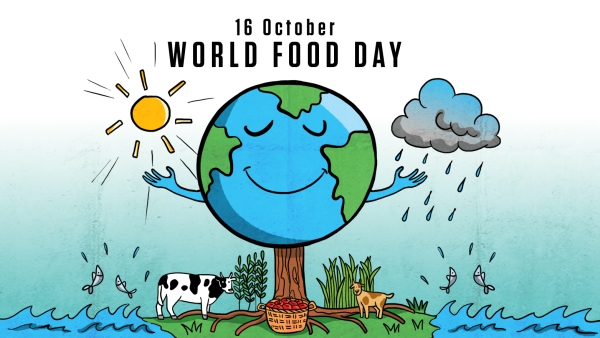What is World Food Day?

October 27, 2021
After the Great Depression, the United States was desperate to better the standard of living for its citizens. Families were struggling, hunger and malnutrition were extremely high and those who worked in the agricultural field were dying to make up for the overproduction they worked with for many years.
On Oct. 16, 1945, 42 countries gathered in Quebec, Canada to try and combat the problems of hunger and malnutrition around the world. Their efforts formed to create the United Nations Food and Agriculture Organization (FAO). The FAO states that their overall goal is “to achieve food security for all and make sure that people have regular access to enough high-quality food to lead active, healthy lives.”
Hunger and food insecurity, defined by the FAO, is when a person lacks the accessibility to safe and nutritious food for normal growth and development, who then suffers from physical discomfort and possibly death. The World Counts, a site dedicated to tracking issues regarding the global population, states that global issues such as hunger and malnutrition account for about 3.1 million child deaths a year, or 30 percent of child deaths overall.
Every year on Oct. 16, World Food Day is celebrated to bring awareness to the issues surrounding world hunger. Not only does this day celebrate the founding of the FAO, but also the work the FAO has done to help millions of people around the world. These celebrations bring attention to other worldwide issues that tie into our agricultural habits and growing population.
In the process of combating world hunger, the FAO has fostered the improvement of digital technologies such as irrigation systems, autonomous climate control and autonomous tractors to make farming more efficient. Technological advancements allow farmers to produce more food locally, as well as export goods at higher and faster rates.
As this occurs, food and proper nutrition become more accessible, creating yet another increase in the global population. Because of proper nutrition, people are living longer and starting families sooner.
Population growth shows that the FAO’s efforts are successful. However, the problem of producing enough food for a growing population and cultivating a planet that can sustain such work still exists. The FAO has adapted its efforts to focus on ending world hunger, while simultaneously educating the world about how our population’s actions affect the planet’s well-being.
The FAO has 17 sustainable development goals that aim to build sustainable cities and communities, stand up to climate change contributors, minimize single-use plastics and support other environmental causes. These goals have allowed the FAO to create partnerships and initiatives outside of the agricultural sector.
You can visit the FAO’s World Food Day website for information on how to get involved on a local, national and international level. The website also provides social media graphics, informative videos and articles to share with others to help spread awareness of the FAO’s missions.

